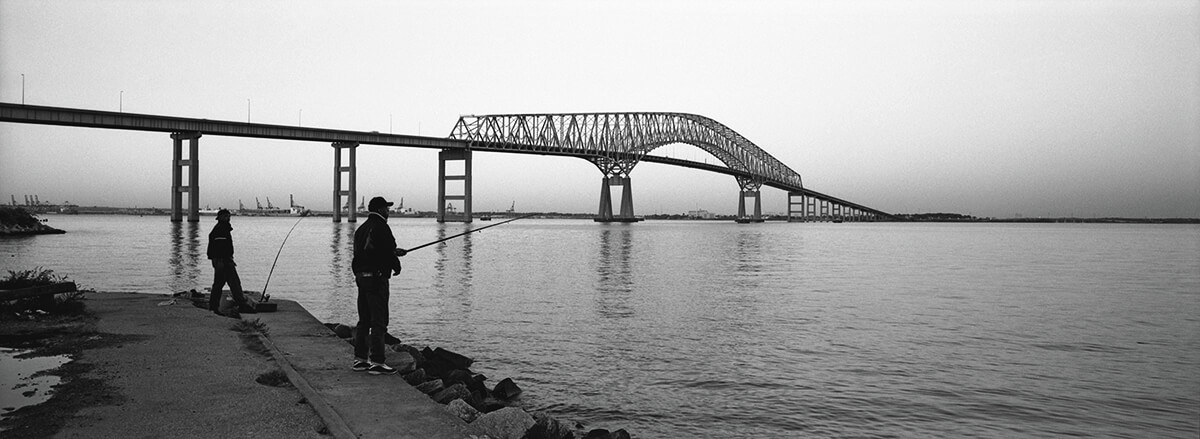News & Community
One-Time “Cowboys of the Sky” Recall Working on the Key Bridge
“It was a monument...the last vestige of an era when generations worked at Bethlehem Steel, GM, and Lever Brothers," says former Key Bridge ironworker Buddy Cefalu, 75. “I just hope I live long enough to see it rebuilt and the first car go across.”

For almost a half-century, retired ironworker Butch Henry has lived with a reminder of his two years building the Francis Scott Key Bridge—namely, his own bridge work.
“I was 300 feet up and a bolt got sheared off a beam,” Henry, 79, recalls. “I don’t know if a wave came by, but something caused the crane to move as we were fastening the beam and it hit me in the mouth. Four of us were up there and I started to fall forward. The guys grabbed me. A friend found my teeth 40 feet down in the section below.”
Bloody mouth and all, Henry walked himself off the bridge. He returned the next week still missing his front teeth. Later, he took a job with the state, doing road maintenance on the Key Bridge.
On the morning of March 26, the first image he saw after turning on the television was the bridge collapsing. “It brought tears to my eyes,” he says. “The guys up there that night that lost their lives—my heart broke on that.”
Six immigrants from Central America and Mexico, repairing pot-holes on the bridge, died after the container ship Dali lost power and crashed into a supporting pier. Four of the men were fathers and several were related. They were Miguel Luna, a 19-year Maryland resident and father of three; Maynor Suazo Sandoval, a 17-year U.S. resident and father of two; José Mynor López; Dorlian Castillo Cabrera; Alejandro Hernández Fuentes; and Carlos Hernández.
More immigrants no doubt will rebuild the bridge named for the lawyer, poet, Marylander, and slave-owner who penned “The Star-Spangled Banner” as he witnessed bombs bursting in air over the nearby waters during the British attack of Fort McHenry.
Ben Womer, a retired steelworker who had founded the Dundalk-Patapsco Neck Historical Society, led the campaign to name the bridge. Each Memorial Day weekend, the Coast Guard places a stars-and-stripes-painted buoy near the spot Key is believed to have been inspired to write what would become the national anthem.
Pastor Terry Turbin, a former carpenters union member, still recalls the freezing winter he spent working on the massive project.
“At the time, it was just a job—$8.10 an hour, I’m feeding my wife, I’m paying my bills—and the older guys are looking out for you, which got me through,” says Turbin, whose Sonshine Fellowship Church sits up the road from the entrance to the bridge. “Then, the years pass, and each time I’d drive over it with the grandkids, I’d point, ‘Right down there was where I was working.’ “People keep asking me, ‘Have you gone to see what’s left?’ And I tell them, ‘No, I ain’t got the heart to go look at that.’”
As with others who physically built the bridge, Buddy Cefalu, 75, feels like a part of his life is suddenly gone. He joined Ironworkers Local 16 as an apprentice two weeks after returning from Vietnam in July 1969.
“It was the third-longest truss bridge in the world when it was built, just the site of the arch was a symbol of industrial strength,” Cefalu says while sharing old photos of himself and fellow “cowboys of the sky” at work on the bridge. “It was a monument to the working-class people of the area, the last vestige of an era when generations worked at Bethlehem Steel, General Motors, and Lever Brothers.
“I just hope I live long enough to see it rebuilt and the first car go across.”